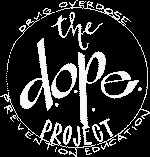An effective overdose prevention model in San Francisco that distributes naloxone to the most at-risk populations in the community
In December 2001, the Drug Overdose Prevention & Education (DOPE) Project began performing overdose education in San Francisco shelters, jails, treatment programs, and single room occupancy hotels and at syringe access programs. Since November 2003 the DOPE Project has coordinated distribution of naloxone via San Francisco service providers. In June 2005, the DOPE Project became a program of the Harm Reduction Coalition.
Currently, the DOPE Project is the largest single-city naloxone distribution program in the country, responsible for training over 13,000 people in San Francisco. People who use drugs, their loved ones, and surrounding community members are responsible for reversing on average 1,500 overdoses a year with DOPE Project naloxone.









